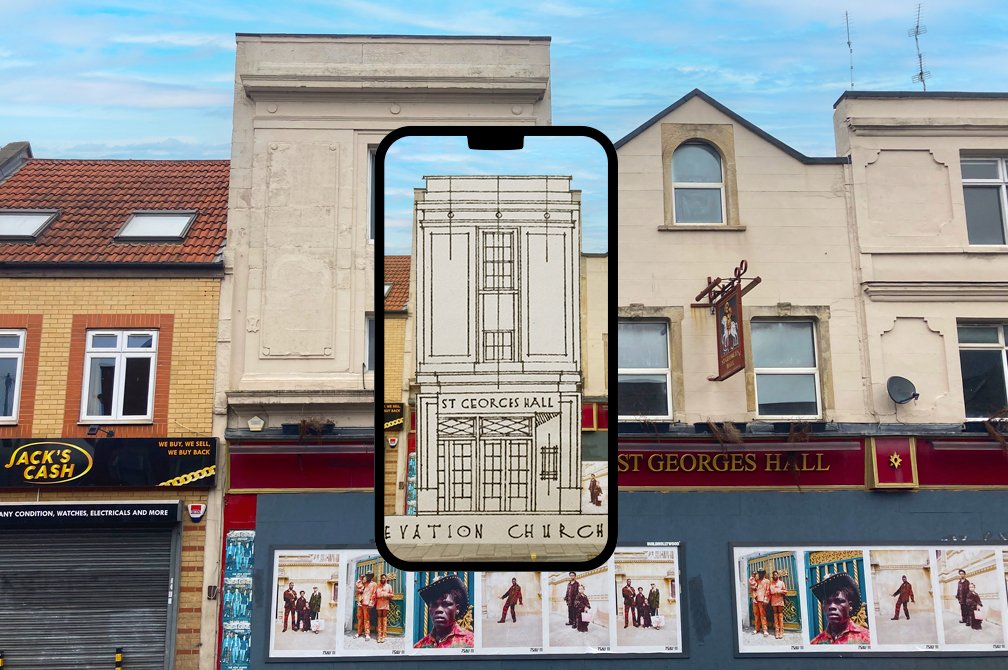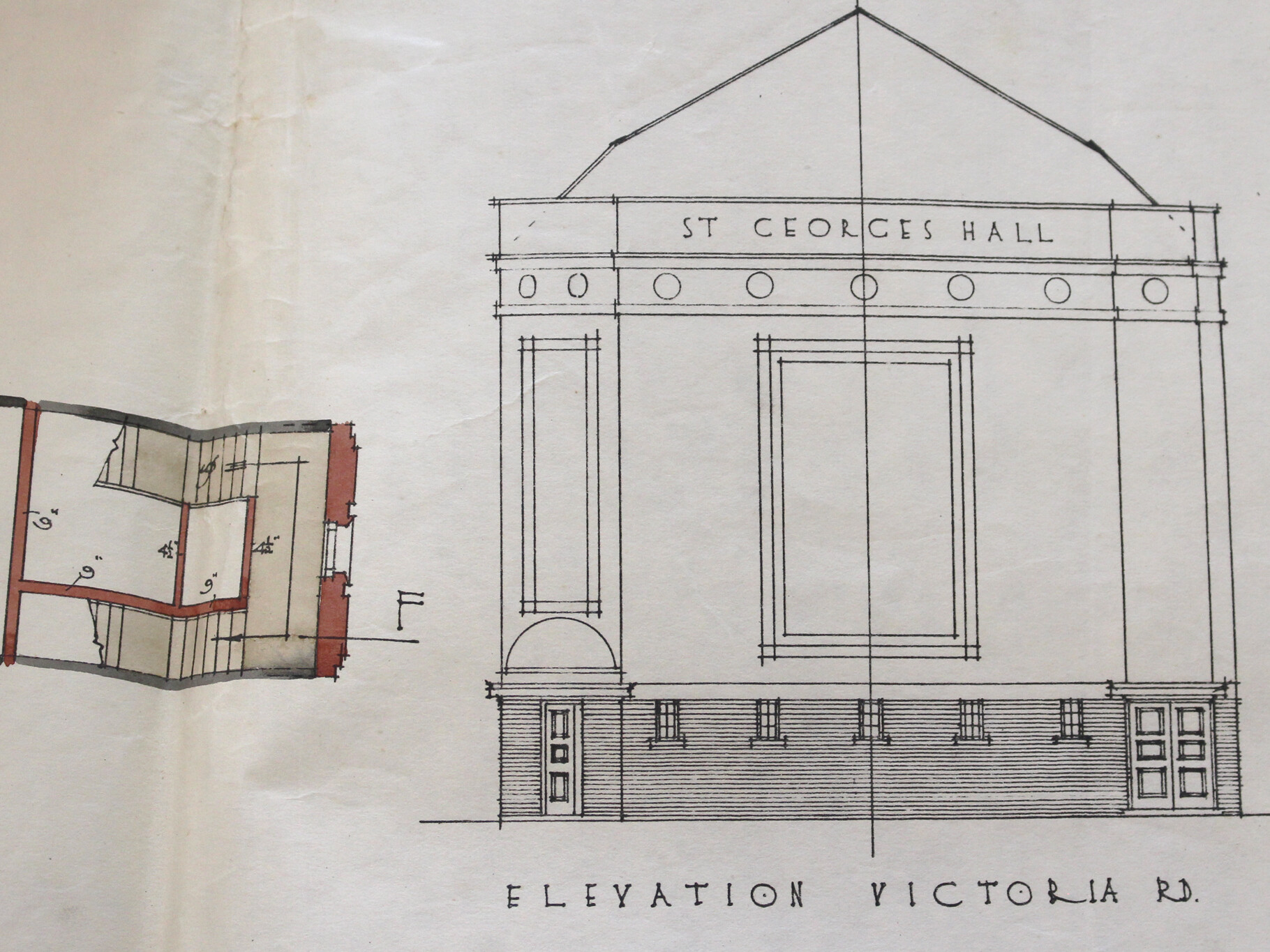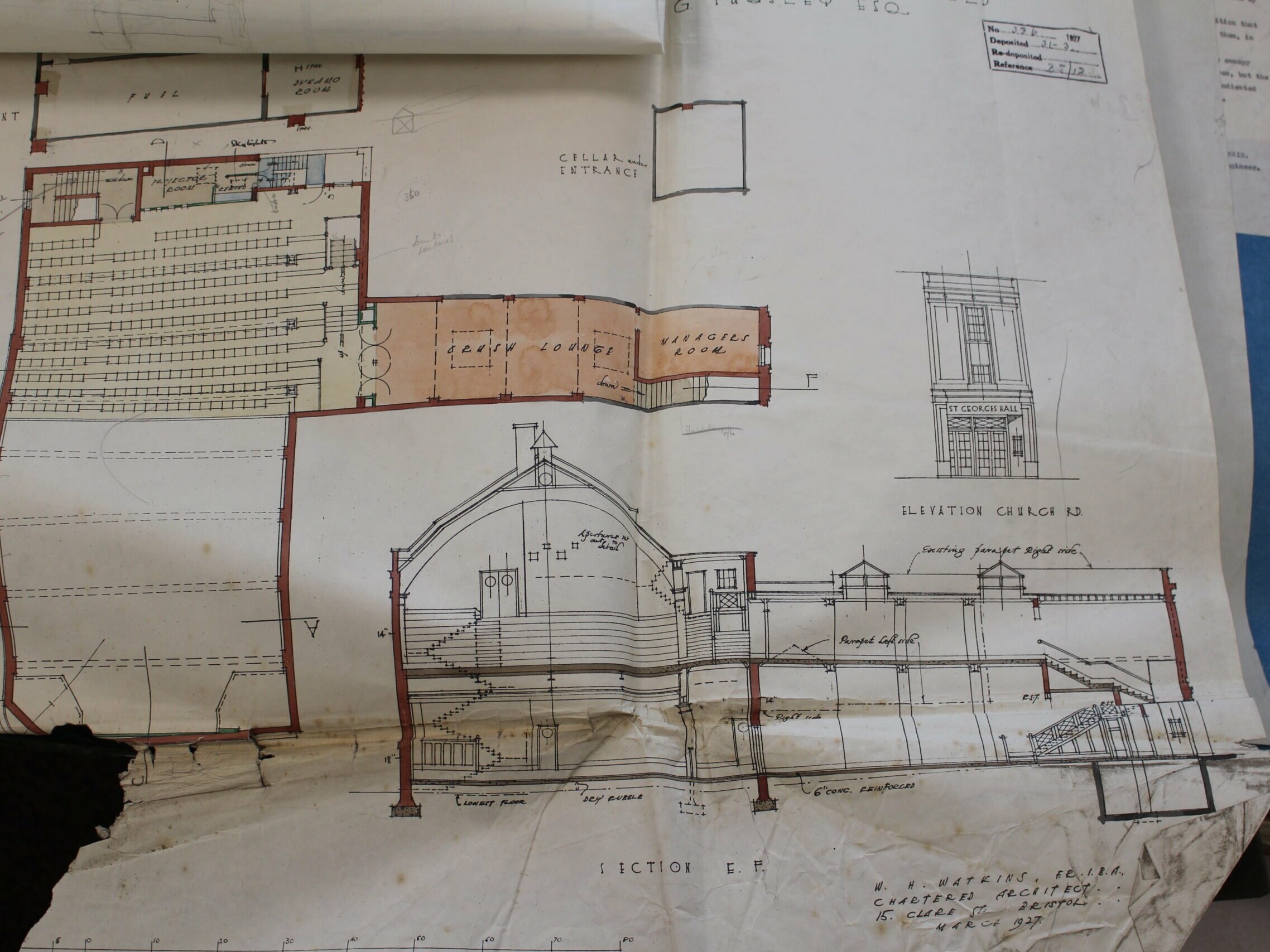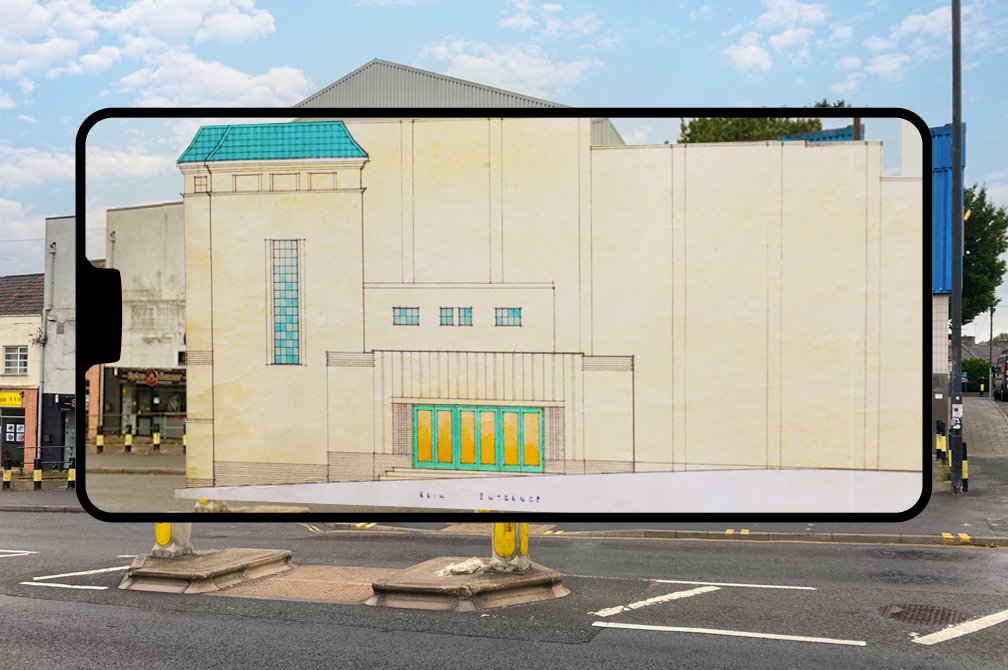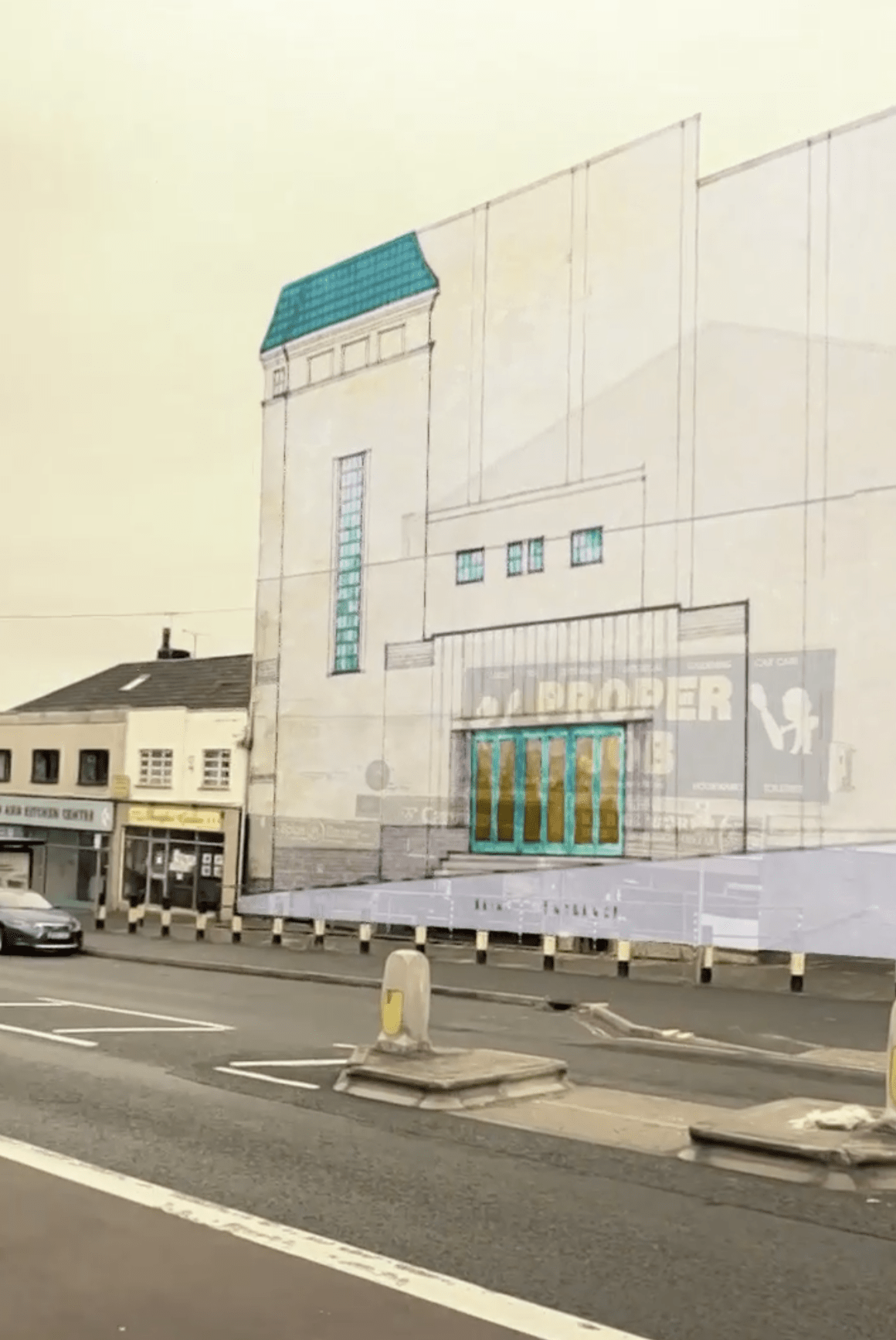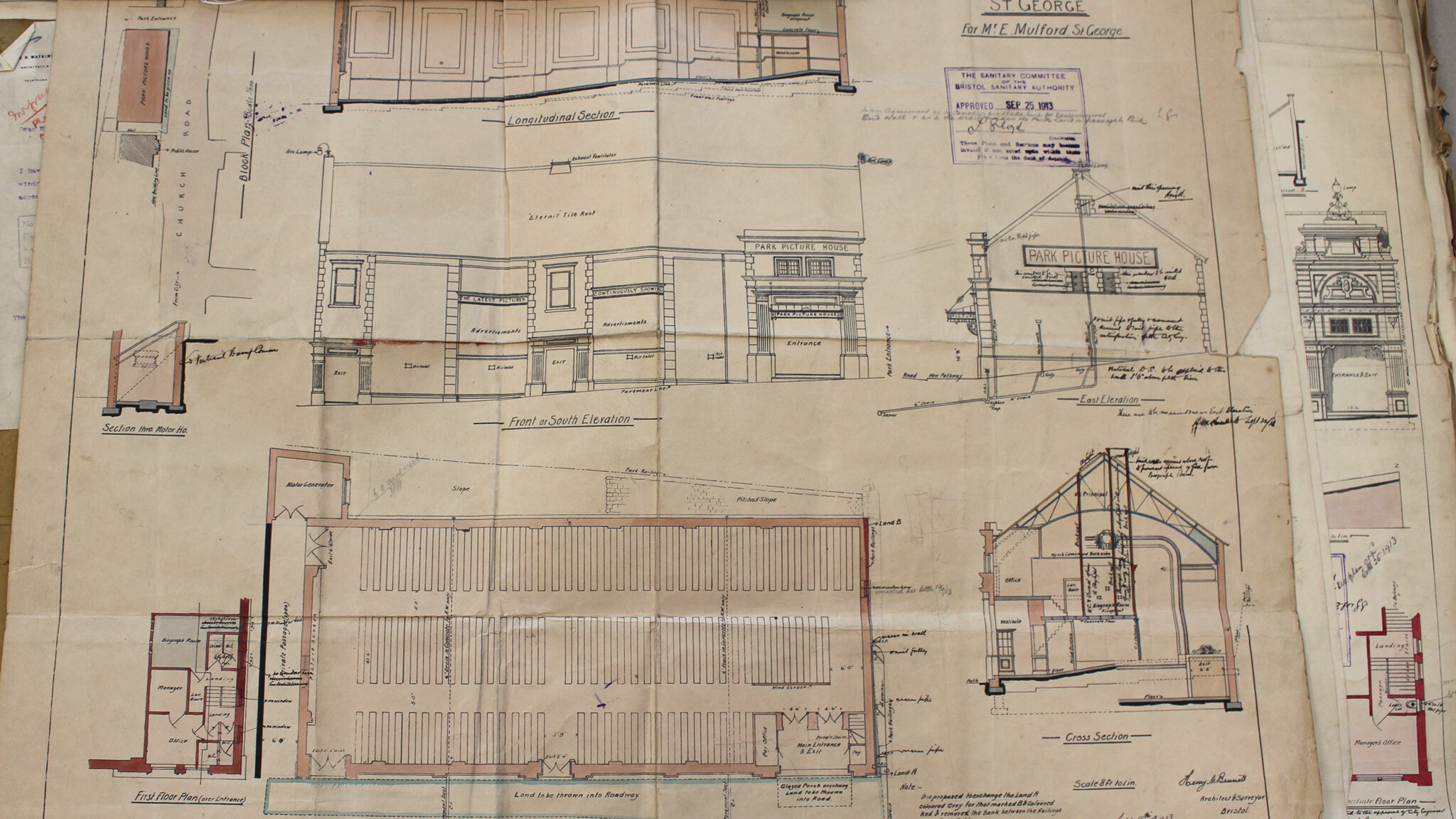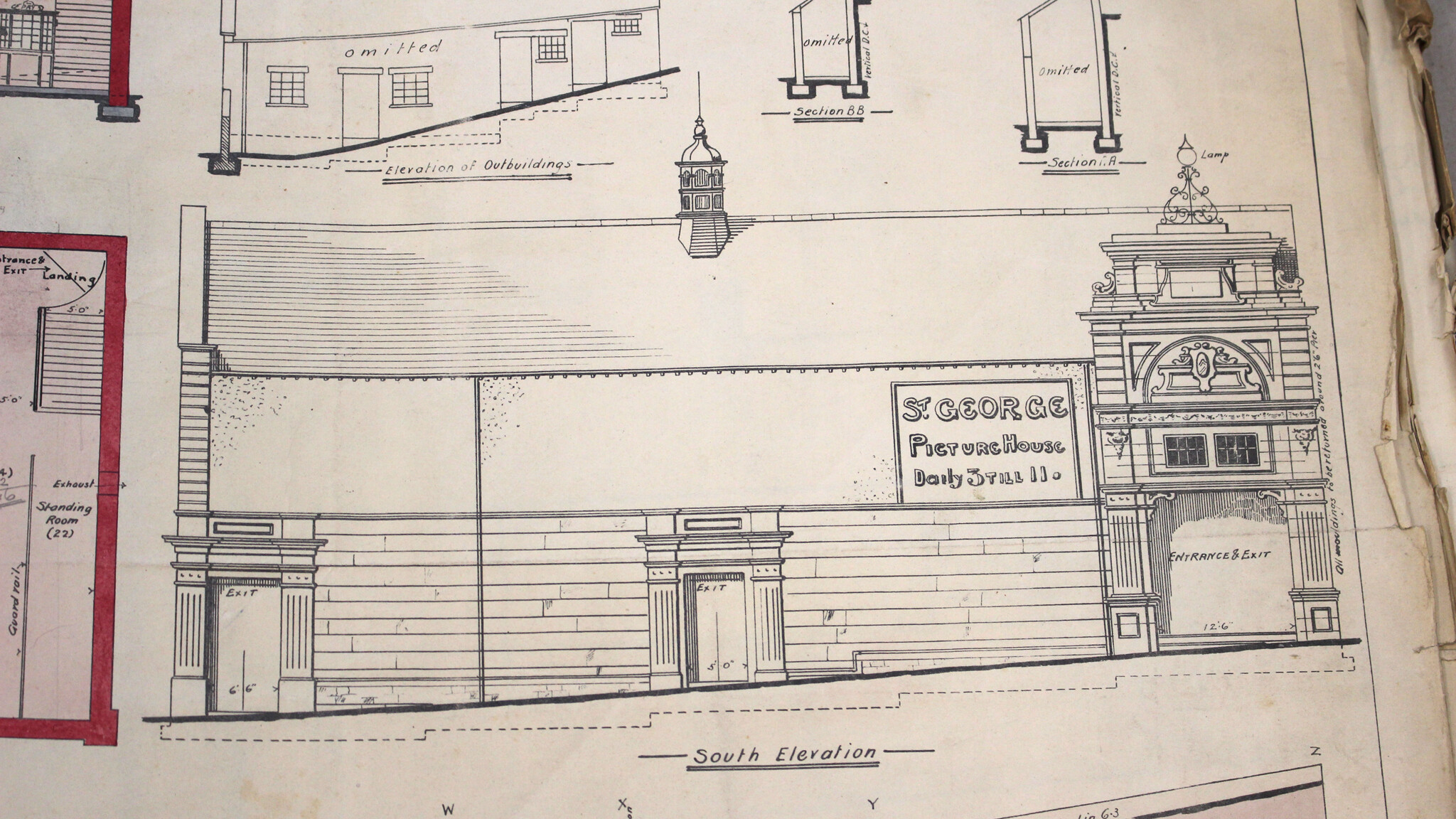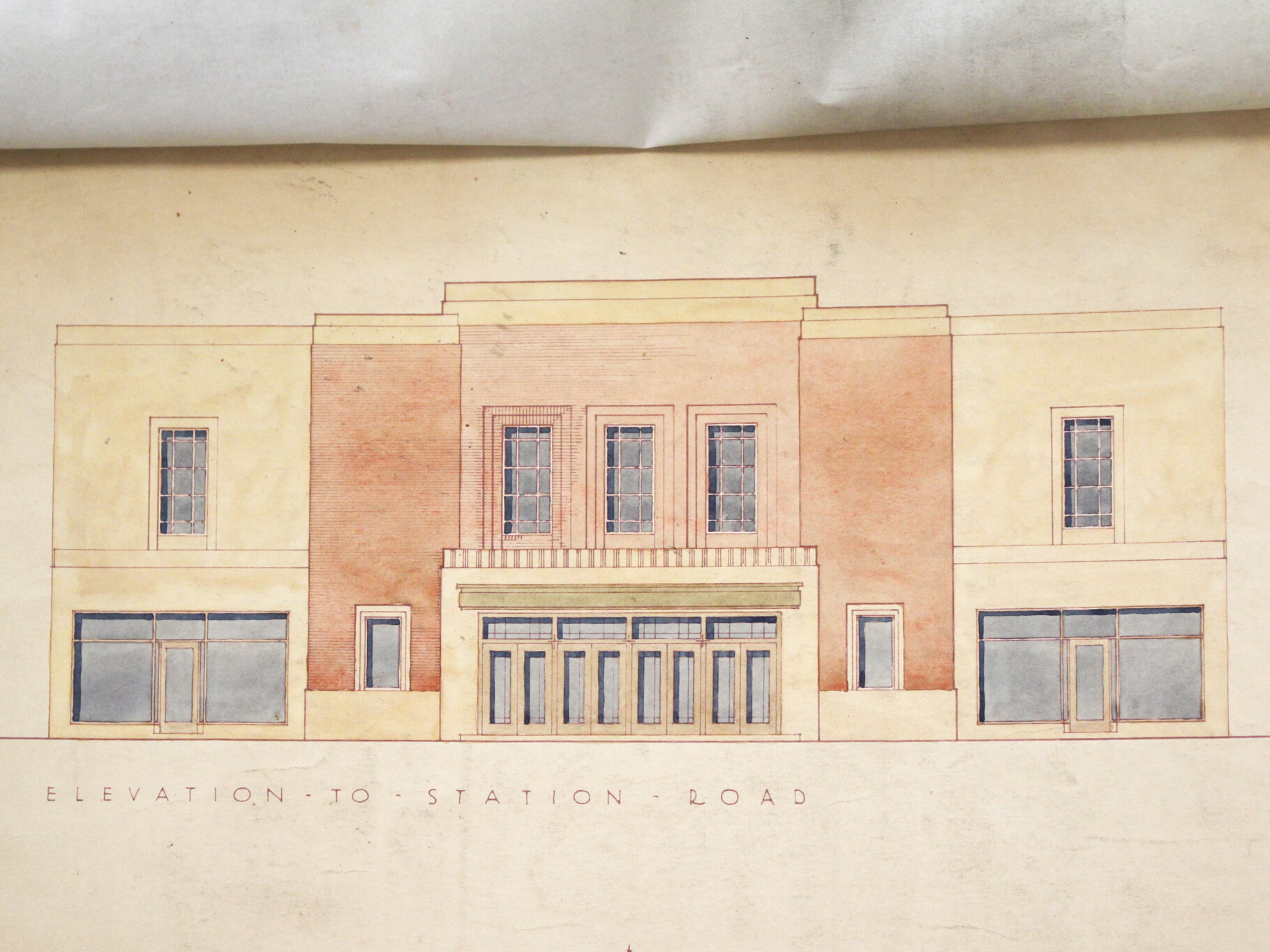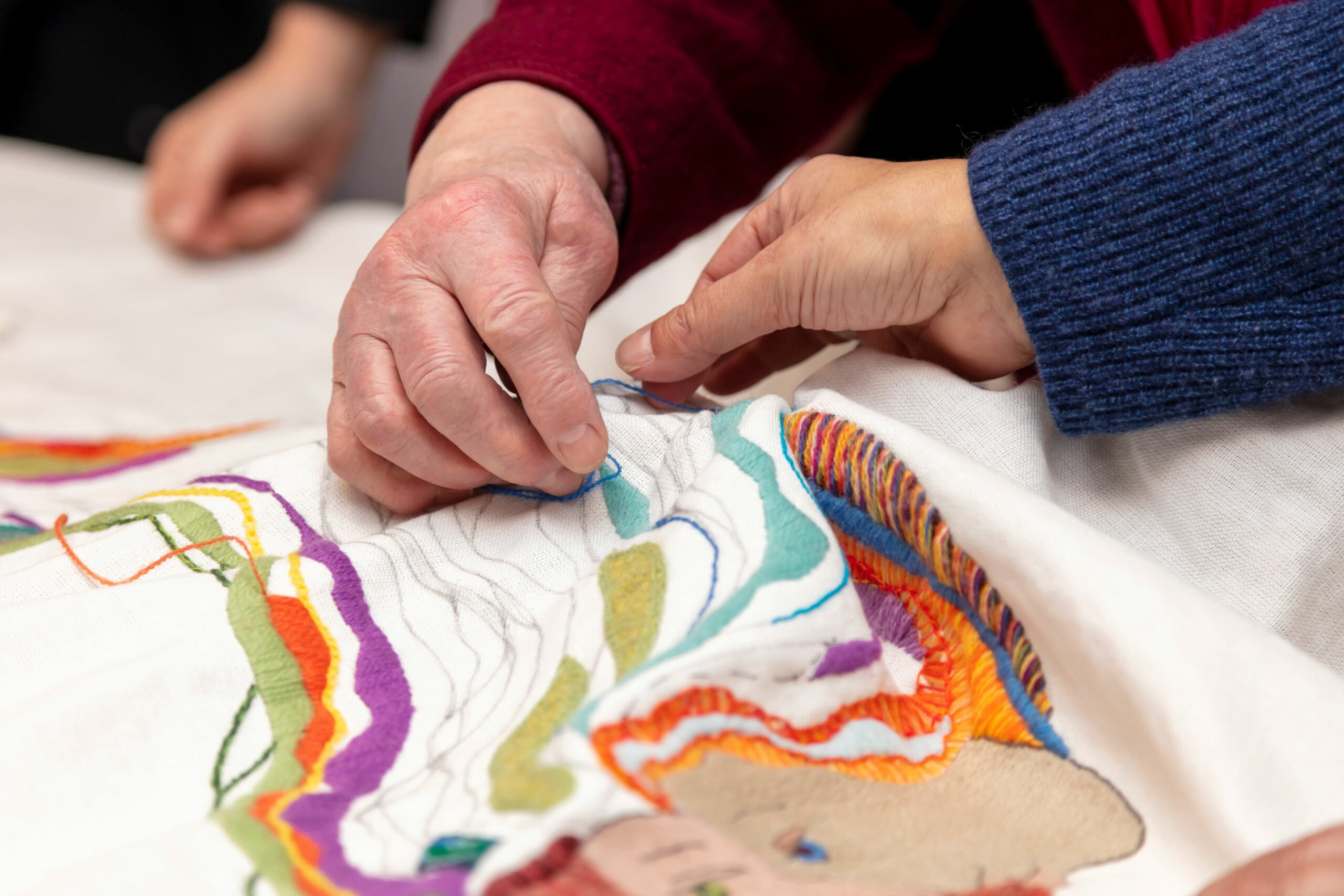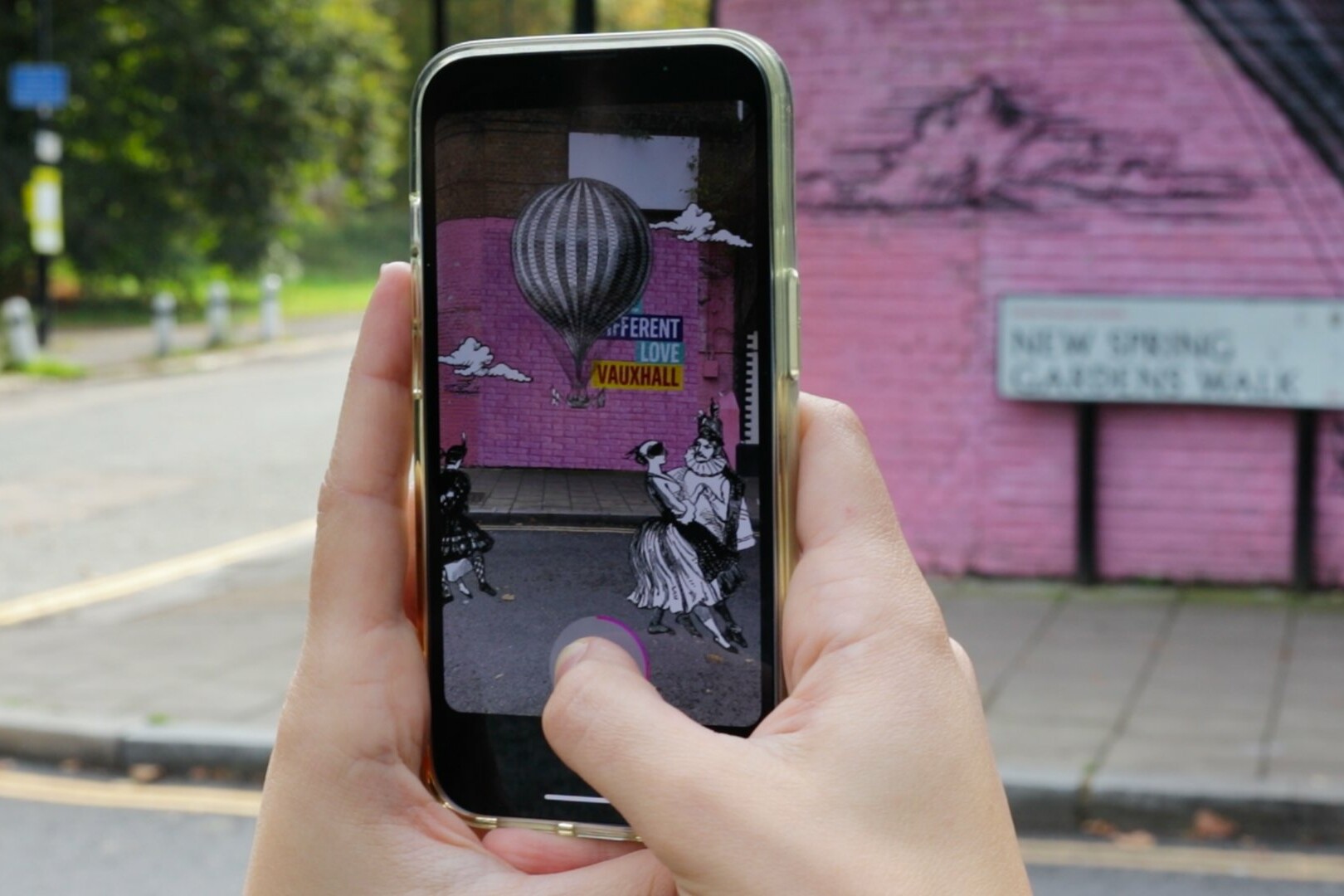Flick Back in Time to a Night at the Movies
Flick Back in Time to a Night at the Movies
1920s Cinema AR Trail
In an innovative collaboration, Zubr Curio and Bristol Archives embarked on a unique heritage project to explore the potential of bringing the past to life through the use of augmented reality. Explore the creative process and implementation of a 1920s cinema AR trail that allows users to experience the original designs of 1920s cinemas across various Bristol locations.
Spanning five different locations, the 1920s Cinema AR trail brings archival documents, including intricate building plans and blueprints to life.
Watch as sketchy pencil markings and sharp ruled lines form the foundations of the buildings before you – or the buildings that once were. Users can visualise Bristol as it once looked, uncovering its theatrical history.
This project was initially conceived to enhance public engagement with historical archives, and has since offered a new, exciting and accessible pathway into learning about local heritage.
5
Cinemas
200
Years of History
314
Archival Volumes
40,000
Building Plans
Partners
This exciting project was devised by Bristol Archives, following a previous collaboration with Zubr Curio for Bristol Old Vic’s Window to the Past augmented reality app. The project was also supported by Bristol City Council and the Archives Testbed Fund.
Your ticket to the Picture House
We developed a ‘mini’ augmented reality trail as envisaged by Bristol Archives, utilising social media filters to enable users to visualise the original designs of 1920s cinemas at their various historical locations in the city.
This approach incorporated historical images – or ‘windows to the past’ – overlaid over the camera view to provide a glimpse into how each site once looked. This approach is akin to the previously successful project with Bristol Old Vic, which takes its name from this visual approach.
Initially, Zubr Curio considered nine different locations, before settling on the final five:
- Bristol Hill Cinema, Bristlington
- Savoy Cinema, Station Road, Shirehampton
- Globe Cinema, Lawrence Hill
- St George Park Picture House
- St Georges Cinema Hall
In order to overcome the limitations and costs associated with developing a custom, standalone AR app, we tested the viability of using a popular social media platform in uncontrolled environments, such as busy high streets to create the 1920s cinema AR experience. We aimed to develop five AR filters using digitised elevational plans of each cinema and the historical context of each location, ensuring users could launch the filters accurately.
To guide users, posters with QR codes were placed in shop windows through contacts established by Bristol Archives’ Economic Development team during the High Streets renewal work. User engagement and data usage were monitored via Spark AR, and feedback was collected through observations and questionnaires to assess the project’s effectiveness.
Pulling back the curtain
During the first Covid 19 lockdown, Bristol Archives staff typed up extensive paper indexes and catalogues which had only been available to researchers in the searchroom. These digitised materials were then uploaded to Bristol Archives’ online catalogues, significantly improving access to their collections.
Over 40,000 plans were bound into 314 volumes, spanning from 1851-1948. Notably, a pattern of increasing cinema constructions in the early twentieth century was discovered, especially during the interwar period. These findings coincided with Bristol’s designation as a ‘City of FIlm’ by UNESCO and the city’s cultural revival post-pandemic, providing an opportune moment to highlight historical leisure and cultural venues.
Bristol Archives were keen to mark this historical trend to highlight the surge in cinema constructions following the First World War, drawing a parallel between the reopening of culture and social venues following the lifting of Coronavirus restrictions and the aftermath of WW1 and the Spanish Flu epidemic.
Many of the cinema plans relate to venues built in the expanding, suburban areas of Bristol in the interwar period. Several of these locations are in what are now economically deprived parts of the city. By bringing the archives to these communities, we hoped to intrigue residents of Bristol who might not usually engage with the council’s cultural offer, let alone visit or use the city’s archives. We hoped to foster greater cultural engagement by bringing the archives out into the city, as opposed to relying on citizens to visit our searchroom or galleries and exhibition spaces.
Using Instagram to distribute the 1920s cinema AR filters was also chosen for its potential to widen access and attract a younger demographic. The filters required minimum commitment compared to downloading a new app, ensuring quick and widespread engagement. This digital approach also has the additional bonus of protecting fragile archival materials by reducing the need for physical handling, whilst simultaneously broadening their reach.
Digital archives for everyone
Ultimately, this project demonstrated how augmented reality can be used successfully in uncontrolled environments, bringing history to life in an engaging, accessible manner. By using a popular social media platform such as Instagram to host the filters, we significantly lowered the barriers to engagement, encouraging a wider audience to experience Bristol’s cinema heritage.
This proof of concept has the potential to gain traction and support for any future digitisation or conservation intervention at Bristol Archives, whilst promoting the accessibility and opportunities for engagement for archival collections worldwide.

